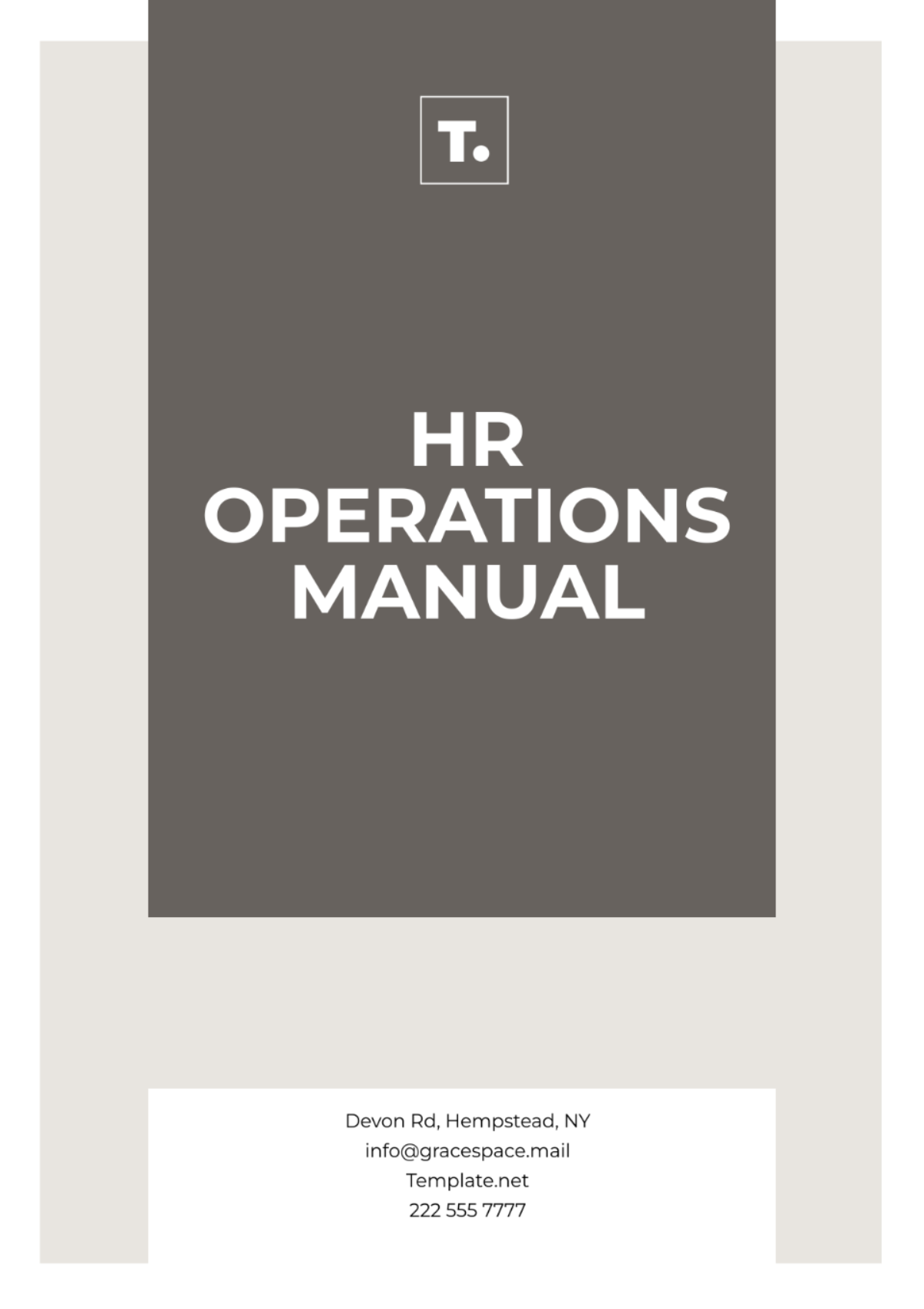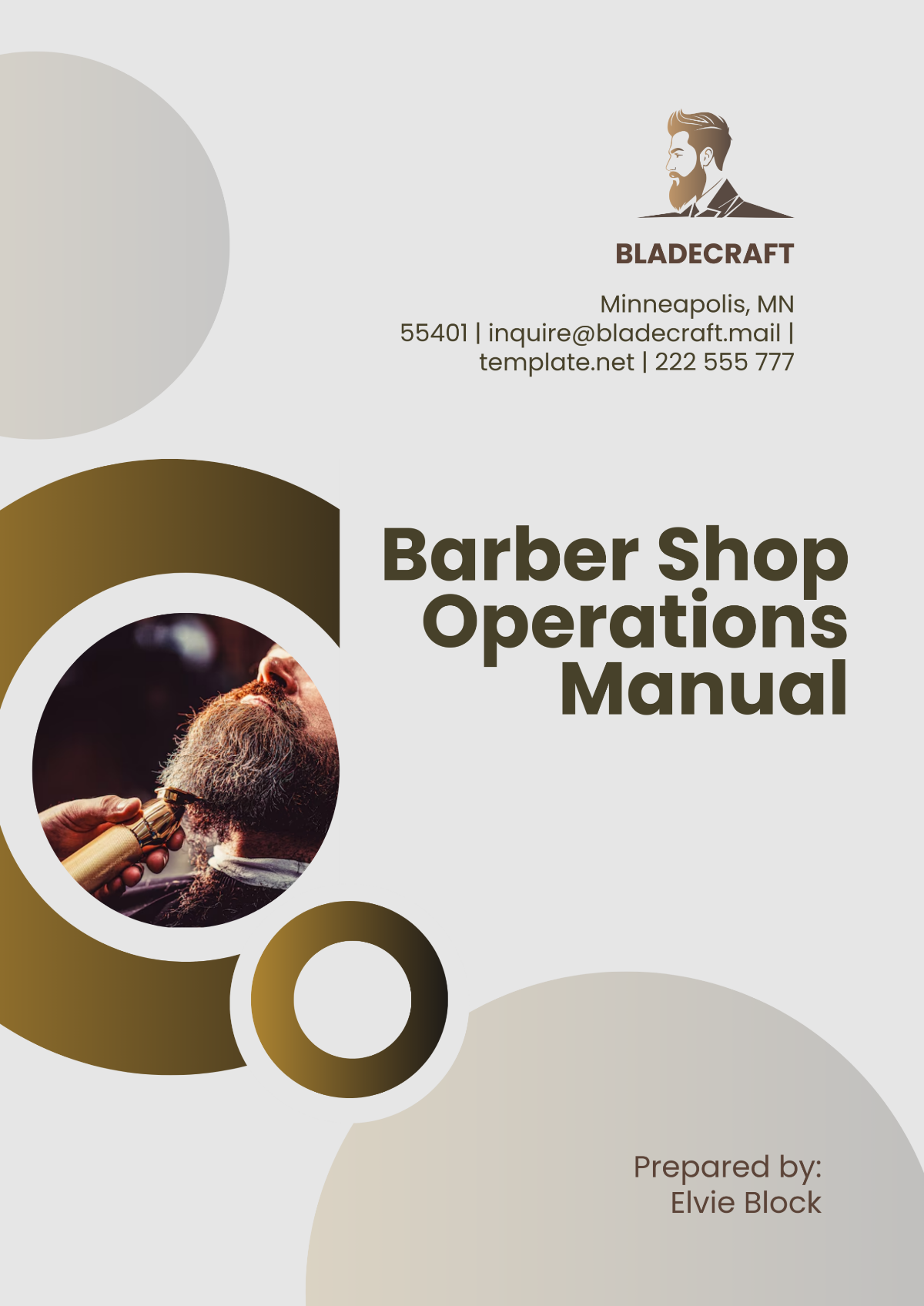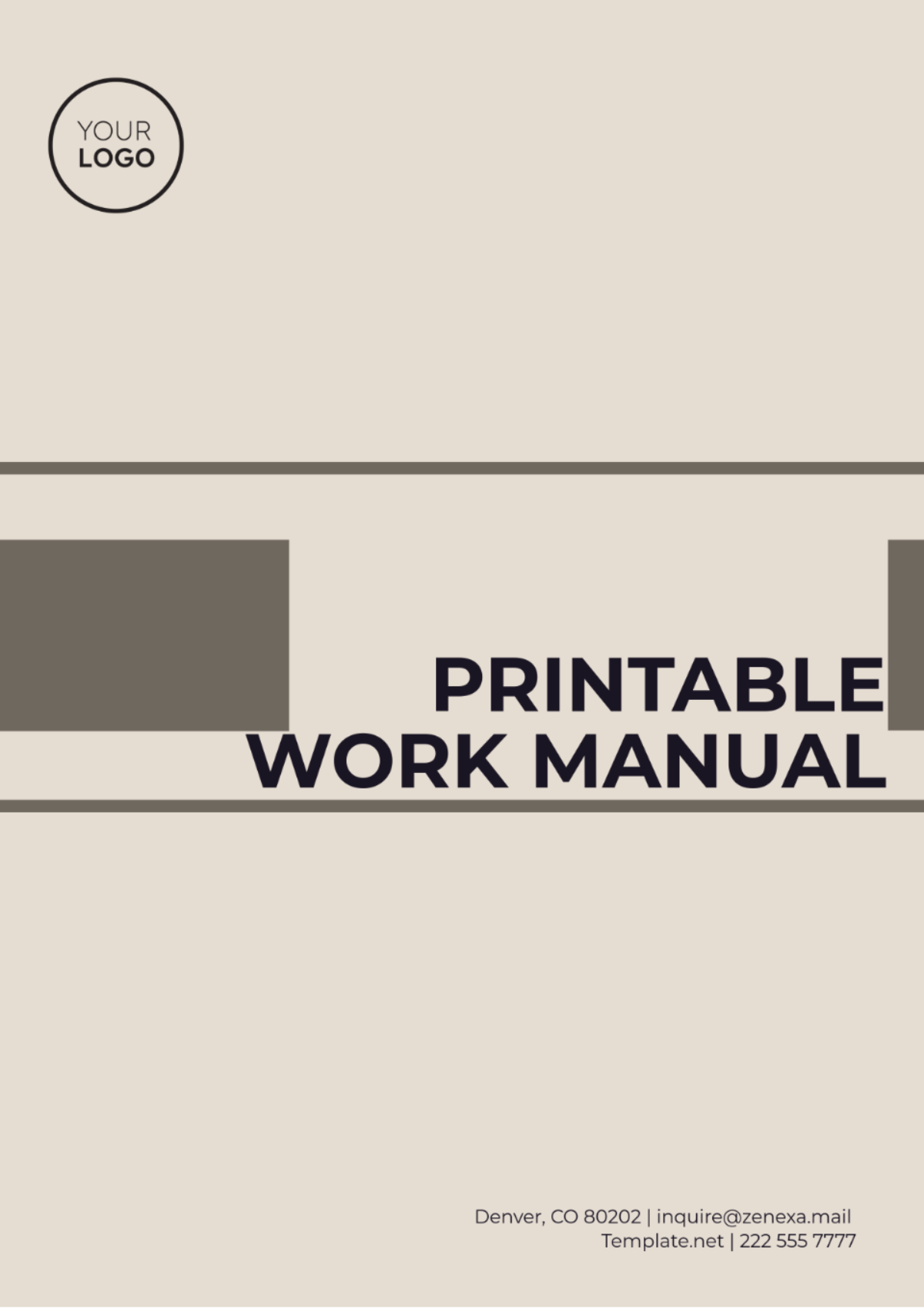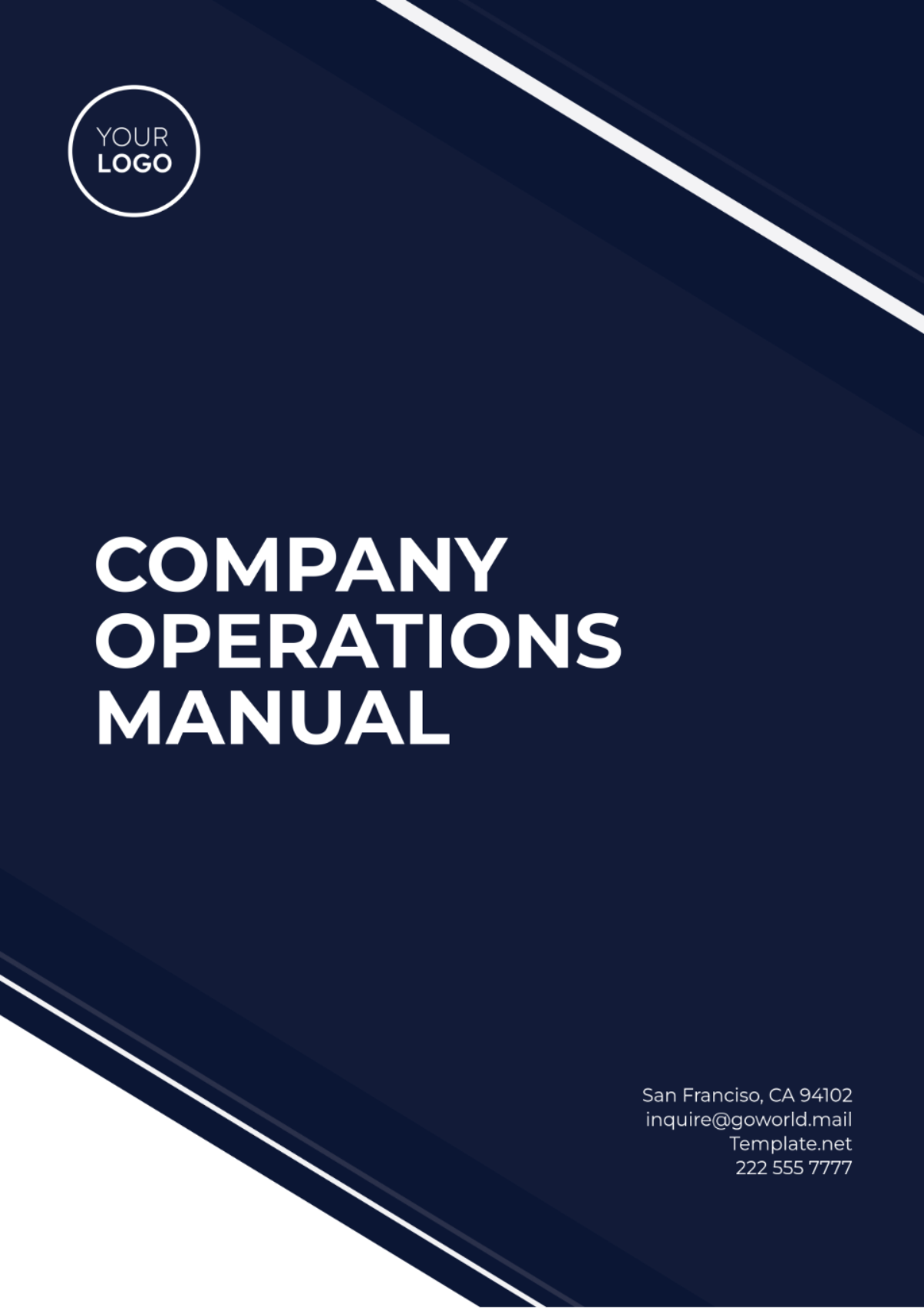Free Janitorial Service Training Manual

- 100% Customizable, free editor
- Access 1 Million+ Templates, photo’s & graphics
- Download or share as a template
- Click and replace photos, graphics, text, backgrounds
- Resize, crop, AI write & more
- Access advanced editor
Standardize training with the Janitorial Service Training Manual Template from Template.net. This editable and customizable template is designed for instructing employees on cleaning techniques, equipment use, and safety protocols. With the Ai Editor Tool, add step-by-step instructions, safety guidelines, and company policies, developing a thorough manual that enhances employee performance and safety.
You may also like
Janitorial Service Training Manual
I. Introduction
This Training Manual is designed to equip the staff of [Your Company Name] with the knowledge, skills, and resources necessary to excel in delivering high-quality cleaning services. This manual serves as a structured guide covering all essential aspects of the job, including service procedures, safety protocols, customer interactions, and company policies. By adhering to this manual, each team member contributes to a safe, professional, and customer-focused environment.
II. Company Mission and Core Values
Understanding and embodying our company’s mission and core values is key to achieving exceptional service. This section outlines the company’s goals and the guiding principles that define the work culture and inspire staff to maintain high standards.
Mission Statement: Our mission is to deliver exceptional, eco-friendly cleaning services that prioritize customer satisfaction, community health, and environmental preservation. Through attention to detail and customer-oriented service, we aim to become the most trusted name in the cleaning industry.
Core Values
Integrity: Uphold honesty and accountability in every task, ensuring clients trust our services.
Excellence: Continuously strive to provide superior service, paying attention to quality, consistency, and safety.
Respect: Value the unique needs of each client and maintain respect for their spaces, schedules, and privacy.
Customer-Centric Service: Place clients' needs at the forefront by offering personalized, responsive service and ensuring satisfaction with each visit.
III. Service Procedures and Standards
Clear and effective procedures are vital for maintaining quality and consistency in services. This section provides a breakdown of service protocols and standards that every staff member is expected to follow to ensure an organized and professional approach to cleaning.
Cleaning Protocols: Follow a standard cleaning order, beginning with high surfaces and moving to low surfaces, and from dry to wet areas to avoid contamination. Use specified cleaning solutions and equipment for each type of surface to prevent damage and achieve optimal results.
Equipment Handling: Inspect equipment at the start of each shift to ensure functionality; immediately report any malfunctions to the supervisor. Clean and store equipment properly after each use to maintain sanitation and extend the life of the equipment.
Time Management: Adhere to time allocations for each task to maintain efficiency and meet client expectations. Balance thoroughness with speed to ensure that high standards are upheld within scheduled timeframes.
IV. Health and Safety Guidelines
Health and safety are paramount in all aspects of the job. This section covers essential guidelines on personal protective equipment (PPE), chemical handling, and emergency protocols to safeguard both employees and clients.
Personal Protective Equipment: Staff must wear gloves, masks, and protective eyewear when working with chemicals and equipment. Ensure that PPE is well-maintained, fits properly, and is replaced when necessary to provide adequate protection.
Chemical Safety: Handle all cleaning agents according to manufacturer instructions, including appropriate dilution, to prevent accidents and maintain safety. Do not mix chemicals unless explicitly approved, as this can create harmful reactions; ensure all chemical containers are properly labeled.
Incident Reporting: Any accidents, injuries, or hazardous spills must be reported to the supervisor immediately and documented in the incident log. Follow designated reporting protocols to improve future safety practices and mitigate potential risks.
V. Customer Interaction and Service Etiquette
Professional and courteous client interactions contribute significantly to client satisfaction and company reputation. This section provides guidelines for handling client interactions with respect and responsiveness.
Greeting and Communication: Introduce yourself politely upon arrival, confirm the scope of work, and provide clients with an overview of the service process. Answer any questions clients may have concisely and respectfully, maintaining a positive demeanor throughout.
Handling Client Concerns: Listen to clients' concerns attentively and acknowledge their feedback. For unresolved issues, document the concern and report it to a supervisor promptly.
Professional Conduct: Maintain a clean and professional appearance, including uniform, grooming, and personal hygiene. Limit personal phone use during work hours and avoid unnecessary conversation when clients are present.
VI. Quality Control and Self-Assessment
Quality control measures ensure that our high standards are met consistently. This section emphasizes the importance of following checklists, self-assessment, and gathering client feedback to enhance service quality.
Checklists and Inspection: Use service checklists to verify that each task is completed to standard; supervisors may conduct spot checks to ensure quality.
Self-Reflection and Feedback: Evaluate your performance daily to identify areas of strength and opportunities for improvement. Take note of client feedback and personal observations.
Client Feedback Collection: Encourage clients to provide feedback through our feedback platform, allowing us to continuously improve services based on client experiences.
VII. Training and Development
Ongoing training and skill development are essential for providing high-quality service. This section outlines the training programs available to all staff, including schedules and objectives for continued professional growth.
Training Program | Frequency | Description |
|---|---|---|
Orientation and Onboarding | First week of hire | Covers company policies, mission, service standards, and safety guidelines. |
Customer Service Skills | Quarterly | Enhances communication skills, conflict resolution, and client interaction techniques. |
Chemical Handling and Safety | Quarterly | Focuses on safe handling, storage, and disposal of chemicals. |
Eco-Friendly Cleaning Practices | Biannual | Trains staff in using sustainable cleaning methods and eco-friendly products. |
Equipment Use and Maintenance | Annually | Instruction on proper use, cleaning, and maintenance of specialized cleaning equipment. |
Regular training on customer service and safety protocols ensures that staff are skilled in both technical and interpersonal aspects of their roles. Biannual eco-friendly training supports our environmental goals, while annual equipment maintenance training minimizes operational issues.
VIII. Compensation and Benefits Overview
[Your Company Name] is committed to offering a competitive and fair compensation package. This section provides details on pay rates, benefits, and additional incentives to reward and support staff.
Category | Details |
|---|---|
Hourly Pay Rates | Competitive pay based on experience and role, with potential for performance-based increases. |
Overtime Compensation | Overtime pay for hours worked beyond eight hours a day, in compliance with labor regulations. |
Health and Wellness | Access to health, dental, and vision plans for all full-time employees. |
Retirement Savings | Option to contribute to a retirement plan with company matching for eligible employees. |
Paid Time Off | Includes annual leave, sick days, and holiday pay. |
Bonuses and Incentives | Performance-based bonuses awarded quarterly for meeting quality and client satisfaction metrics. |
The compensation package is designed to attract and retain skilled employees, with benefits that support long-term wellness and financial security. Quarterly bonuses incentivize excellence, while health and retirement benefits demonstrate a commitment to employees’ overall well-being.
IX. Evaluation and Performance Reviews
Performance evaluations provide an opportunity for feedback, growth, and recognition of achievements. This section outlines the review process and criteria, emphasizing accountability and continuous improvement.
Biannual Performance Reviews: Staff undergo formal reviews twice a year, assessing adherence to company standards, customer feedback, and service quality.
Key Performance Indicators (KPIs): Evaluations are based on KPIs, including punctuality, task completion rate, client satisfaction, and adherence to safety protocols.
Improvement Plans: For staff not meeting standards, supervisors create individualized improvement plans to address key development areas with clear goals.
X. Next Steps
The completion of this manual signifies each staff member’s commitment to uphold company standards. It provides a roadmap to successful service and personal growth within [Your Company Name].
Acknowledgment and Sign-Off: Staff must sign an acknowledgment form, confirming their understanding of the manual contents and willingness to adhere to all guidelines.
Feedback Mechanism: Staff are encouraged to provide feedback to HR or supervisors on any aspect of the manual or training, ensuring continuous improvement.
Implementation and Continuous Review: This manual will be periodically reviewed and updated to ensure relevance and efficiency in training, safety, and service standards.
By adhering to this manual, each team member contributes to [Your Company Name]’s reputation as a trusted, reliable service provider in the industry, committed to both quality and client satisfaction.





























